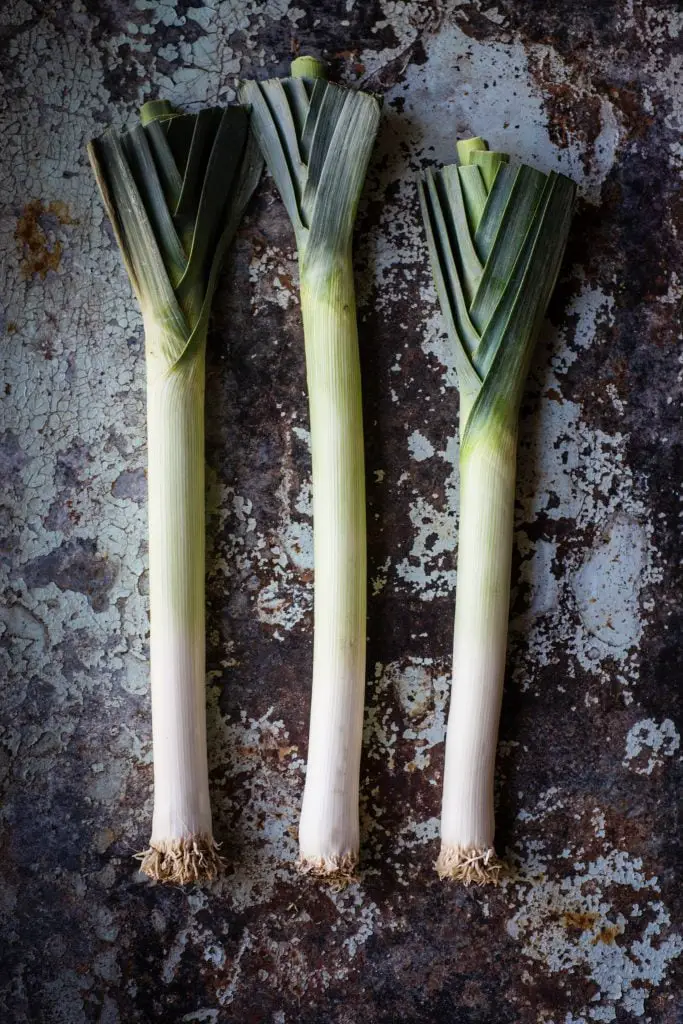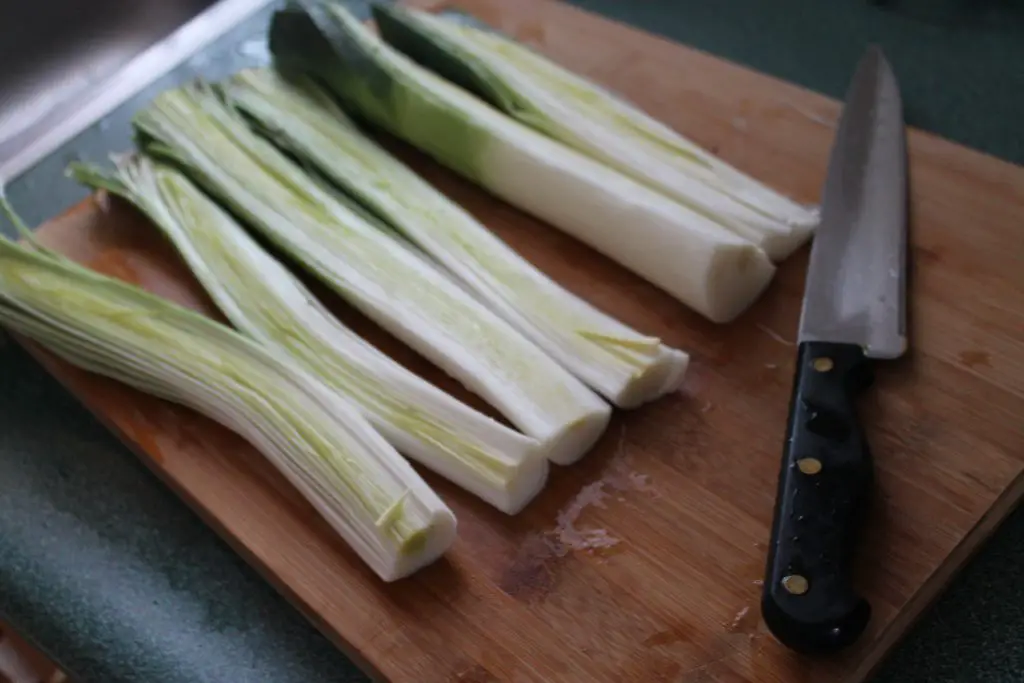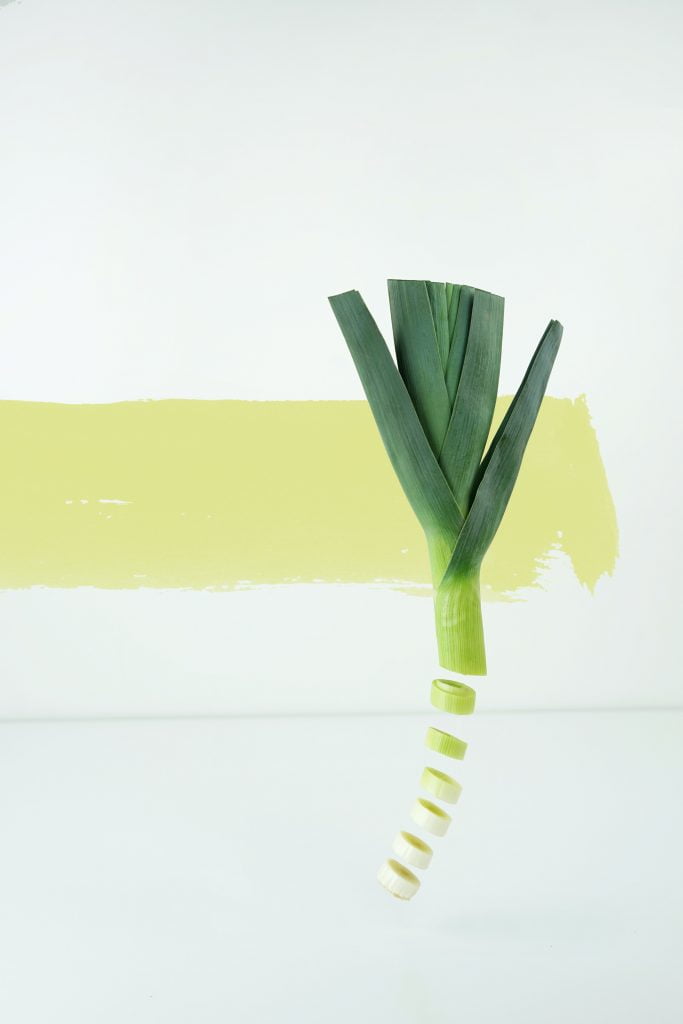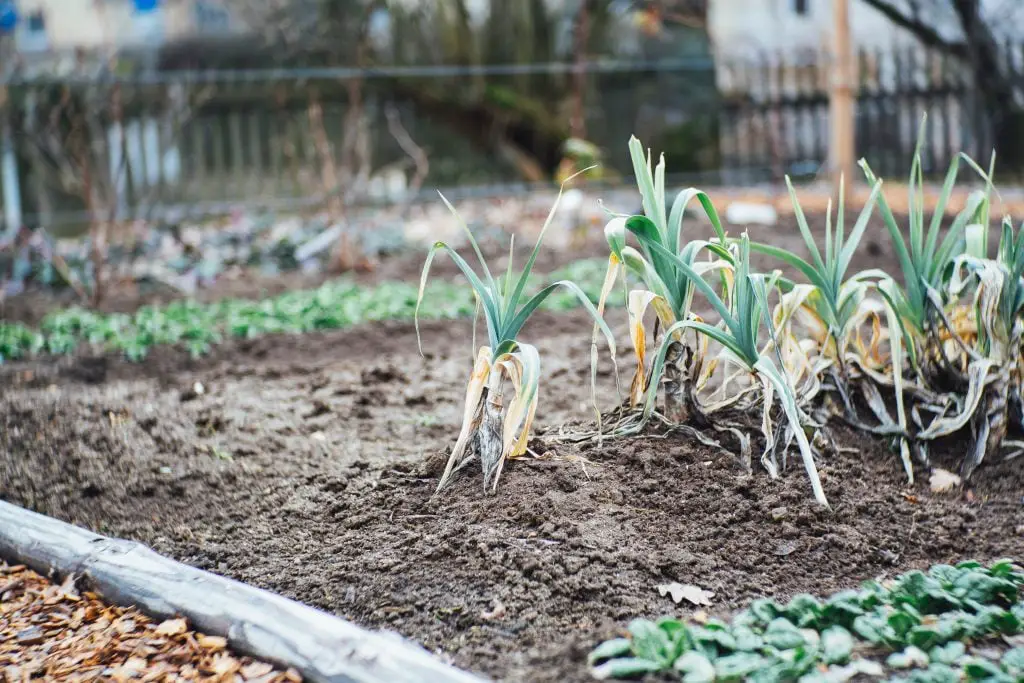Why Are Leeks Gritty? The Leek is a popular Winter vegetable that is extremely hardy and will withstand temperatures as low as -18°C (0°F). This makes it an extremely useful vegetable as it can stand all Winter in the garden, in most climates, and be harvested throughout the Winter and into early to mid Spring. Early Spring is a period of the gardening calendar where there is often limited produce available to eat.
However, there is a problem. Leeks are often gritty, which makes eating them decidedly less pleasant than it should be. The reason for this is that many growers blanch the base of the Leek to produce the white section of the stem. This is sometimes done by earthing up soil around the base of the stem to exclude the light. During this process, soil and sand can get between the layers of flesh which are very tightly bound together to create the shaft of the Leek.
Once the sand or soil becomes lodged in between the layers, it is often difficult to remove. The presence of these particles creates the gritty texture.

How To Remove The Grit From Leeks
To remove the grit from Leeks and prepare them for cooking, there a few steps you need to undertake.
Remove The Roots. The first step is to start by chopping off the bottom section of the Leek, which has the roots attached, with a sharp knife. The cut should be made about 1cm (0.5 inches) above the bottom of the shaft.
Slice The Leek Length Ways. Cut the Leek length ways down the middle of the shaft. At this point, it is a good idea to soak them in water to start removing any grit. It helps to pull the layers apart when running the Leeks under water, to help to get the grit out. This is particularly important if you plan to cook the shafts whole.

Peel Away Any Tough Outer Layers. The outer layers of the Leek can sometimes be very fibrous. It is best to only use the tender inner layers of the Leek.
Slice The Leeks Across The Grain. It is best to slice them into 1 cm chunks, as per the image below.

Rinse Sliced Leeks Under Water. When rinsing the Leeks in water, ensure that all the little discs of Leek are separated with your fingers. Rinse the Leeks several times to ensure all the grit has been removed. An alternative technique, is to place the chopped Leeks in a bowl of cool water and use your hands to agitate the Leeks in the water. The sand contained within the Leek will fall to the bottom of the bowl. The pieces can then be removed to a colander, for a final rinse.
How To Minimise Grit When Growing Leeks
As mentioned earlier in the article, Leeks are an extremely hardy vegetable capable of withstanding very low temperatures. This property means there is a wide variety of times that Leek seeds can be sown. However, Leeks are generally planted, in cool climates in Late Winter to Early Spring, and in moderate climates Leeks may also be planted in Late Summer for harvesting in Winter.
However, to ensure that Leeks are a reasonable size in Winter, the majority of growth needs to be completed before the weather cools down. As a result, delaying sowing by just a few weeks, can have a significant impact.
Leeks can be sown directly into the garden or into modular trays. However, we recommended that you start Leeks in modular trays, because it allows them to be sown in clumps (or multi-sown). The advantage of multi-sowing, is that it allows a larger number of plants to be grown, in a given area. It also saves a lot of time when planting Leeks in the garden.
For Leeks, the ideal number of plants per clump is 4 to 5. Any more than that in a clump, will affect the size of the Leeks. To achieve this, sow 5 to 6 seeds per module, to ensure that you get at least 4 viable plants per clump. If all the seeds germinate, simply thin the clumps out, prior to planting. If you want to learn more about multi-sowing, click on the link here or watch the video below.
For Leeks to germinate they require at least 7°C (45°F), as such, it is recommended that seeds be sown undercover, if you are planting seeds in Early Spring. This is particularly the case in cold climates. A low cost option to purchase seeds is online at Seeds Now. They have a very wide range of seeds and specialise in Heirloom varieties.
Seedlings should reach a reasonable size after 4 to 6 weeks, however the seedlings can be held in trays longer than that, if the space in the garden is not yet available.
When planting the seedlings out, clumps should be spaced 30cm (12 inches). This may seem to be quite wide spacing at first glance, however the main reason we recommend this, is the ease of maintenance. Wide spacing allows a Dutch Hoe to be used between the clumps, which largely negates the need to hand weed.
Leeks prefer a sunny location (six hours of full sun per day or more), however they will tolerate part shade. The soil should be moist and free draining with plenty of organic matter. We recommend using the No Dig approach to gardening as it is easy, simple, minimises weeds and requires very little effort. To learn more about this approach go to https://planyourpatch.com/how-to-prevent-weeds-from-growing/.
Throughout the growing season the Leeks will require very little maintenance. From time to time the Leeks may need to be watered, if there has been very little rain fall. However, if you want to achieve blanching of the stem, the light needs to be excluded from the base of the plant. To do this, it is best to use thick straw.

Some gardeners choose to mound soil around the plants to increase the extent of blanching along the stem, however this is how the soil and sand get into the leeks. So avoid doing this. It is worth noting that green Leeks are perfectly edible as is, so blanching is not absolutely necessary to grow Leeks.
How To Store Leeks
As mentioned earlier in the article, Leeks are highly resistant to the cold and will happily stay in the ground until required. It is only necessary to remove Leeks from the garden if the soil becomes too wet, as there is a risk the roots could rot.
In regions where the Leeks need to be removed, they can be stored in the refrigerator for up to a month. However, it is good idea to avoid storing them next to Ethylene gas producing fruits, such as Apples and Pears, as this will accelerate the ripening process. If long-term storing is required, they can be stored unwashed in a cardboard box in a cool, dark and dry place. In these conditions the Leeks will last a few months.
